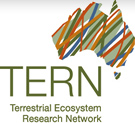 Thanks to TERN for letting us repost this article –
Thanks to TERN for letting us repost this article –
With the launch of the Soils to Satellites (S2S) online tool, TERN’s Eco-informatics facility gives people a way to explore and visualise relationships between types of ecosystem data that weren’t possible until now.
S2S has been developed collaboratively by Eco-informatics and the Atlas of Living Australia (ALA) with funding support from the Australian National Data Service (ANDS).
The tool brings diverse datasets together into an easy-to-use interface that enables visualisation and comparison. They include ecological and genomics data collected through TERN’s Multi-Scale Plot Network and delivered through Eco-informatics’ Australian Ecological Knowledge and Observation System (ÆKOS), with remote-sensing datasets available through AusCover, alongside spatial and biodiversity information available via the ALA.
Eco-informatics Director Mr Craig Walker said that, with S2S, researchers could explore and display the relationships between these diverse datasets in ways not previously possible in a single application. For example, users could display layers of Australian environmental data such as elevation, temperature and soil type, and then ‘drill down’ to view and explore rich ecological and genomics data as provided through the work of Multi-Scale Plot Network.
‘The Soils to Satellites tool will be invaluable to researchers by enabling them to display and interpret different but complementary research data from many sources more effectively through a single web tool,’ Craig says.
 |
 |
Screenshots from Soils to Satellites … with this tool, researchers can explore and visualise a wide range of ecosystem data
The tool was implemented as a pilot project. Craig said its successful delivery in only a year demonstrated the significant advances that were possible by working collaboratively to combine expertise and to build on existing investments in research infrastructure.
The Program Manager of the ALA, Mr Peter Doherty, also believes the tool is ground breaking.
‘This project is a great example of adding value to Australia’s investment in research data infrastructure,’ he says. ‘Collaborating on this project and bringing together our collective data infrastructure expertise helps to make ecosystem science even more productive and effective.’
For more information contact Eco-informatics Technical Manager, Mr Martin Pullan; the Eco-informatics Director, Mr Craig Walker; or the ALA Program Manager, Mr Peter Doherty.
The Soils-to-Satellites project is supported by the Australian National Data Service and the Atlas of Living Australia. Both capabilities are supported by the Australian Government through the National Collaborative Research Infrastructure Strategy Program and the Education Investment Fund (EIF) Super Science Initiative.
Published in TERN e-Newsletter June 2013